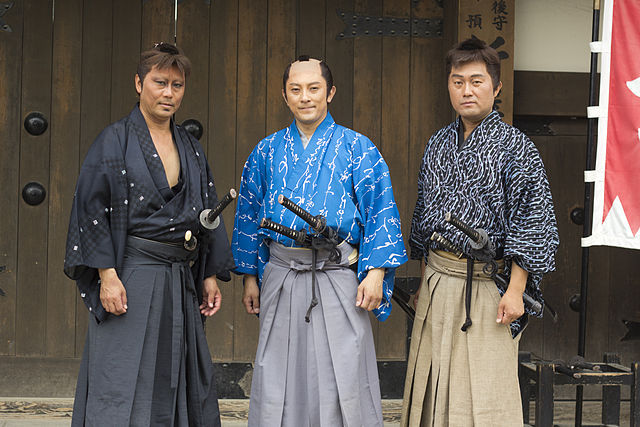Costume is the distinctive style of dress or cosmetic of an individual or group that reflects class, gender, profession, ethnicity, nationality, activity or epoch. In short costume is a cultural visual of the people.
Actors in samurai costume at the Kyoto Eigamura film set
A captivating performance of Rajasthani folk dance, showcasing the vibrant cultural heritage of India. Image source: Wikimedia Commons.
A delightful glimpse into Kodomo Kabuki, the children's kabuki theater tradition in Nagahama, Japan. Young performers bring classic Japanese plays to life with their vibrant expressions and lively acting. Image source: lensonjapan.
A captivating moment from Kodomo Kabuki, the children's kabuki theater at the Hikiyama Matsuri in Nagahama, Japan. Here, a young performer embodies the role of Warrior Kumagai Jiro Naozane, showcasing the depth of talent and dedication among the young actors. Image source: lensonjapan.
Stagecraft is a technical aspect of theatrical, film, and video production. It includes constructing and rigging scenery; hanging and focusing of lighting; design and procurement of costumes; make-up; stage management; audio engineering; and procurement of props. Stagecraft is distinct from the wider umbrella term of scenography. Considered a technical rather than an artistic field, it is primarily the practical implementation of a scenic designer's artistic vision.
Early stagecraft master Robert Edmond Jones drawing at a high table (c. 1920).
Performance of Gijsbrecht van Aemstel in Amsterdam (c. 1904-1905).






